Never heard of the pegan diet before? Don’t worry; you are not alone. The pegan diet combines key principles from paleo and vegan diets. Paleo + vegan = pegan. If you are a fan of Brangelina (Brad Pitt and Angelina Jolie) and Bennifer (Ben Affleck and Jennifer Lopez), you probably got this in the first go.
Mark Hyman, MD, first wrote about the pegan diet in 2014 and outlined the details of the new diet in his book ‘Food: What the Heck Should I Eat?’ published in 2018.
If you know a thing or two about paleo and vegan diets, you’d know they are very restrictive. The list of foods you cannot eat is always longer than the list of foods you can eat. When people realize that the pegan diet combines paleo and vegan diets, they instantly think it will be more restrictive than the two. However, this is not the case.
What are Paleo and Vegan Diets?
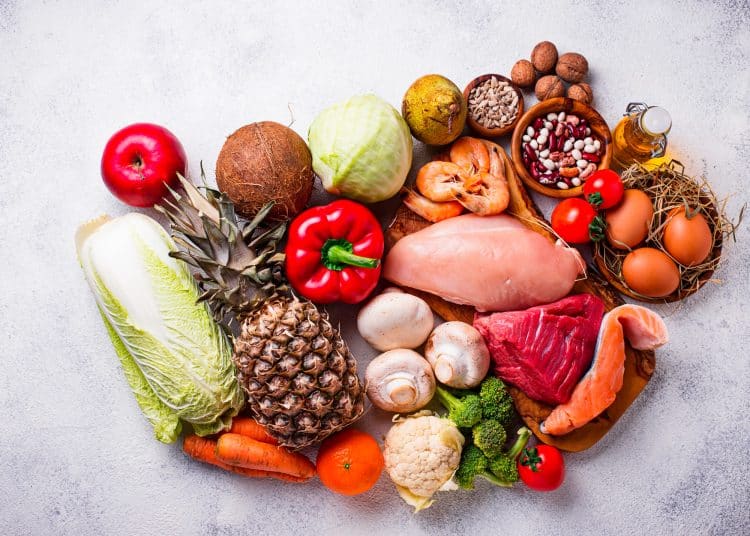
Before we get into the nitty-gritty of the pegan diet, here is a brush-up on the paleo and vegan diets.
Paleo diets focus on types of foods presumed to be eaten by our ancestors and their ancestors. The paleo diet mainly consists of meat, fish, vegetables, and fruit. In this diet, you avoid dairy or cereal products and processed food. Think of the paleo diet as going back to the basics and eating like a hunter-gatherer.
On a vegan diet, you must avoid meat, dairy, and all other animal products. This plant-based diet mainly includes eating vegetables, grains, nuts, and fruits. A vegan diet aims to improve your overall health while curbing animal exploitation.
What is a Pegan Diet?
Paleo and vegan diets are very restrictive. Furthermore, these can be contradicting; while one promotes eating meat, the other diet wants to end animal cruelty.
Now, you might think that a combination of paleo and vegan diets will be very restrictive. However, the pegan diet doesn’t blatantly combine the two diets but combines their best principles and has its unique set of guidelines.
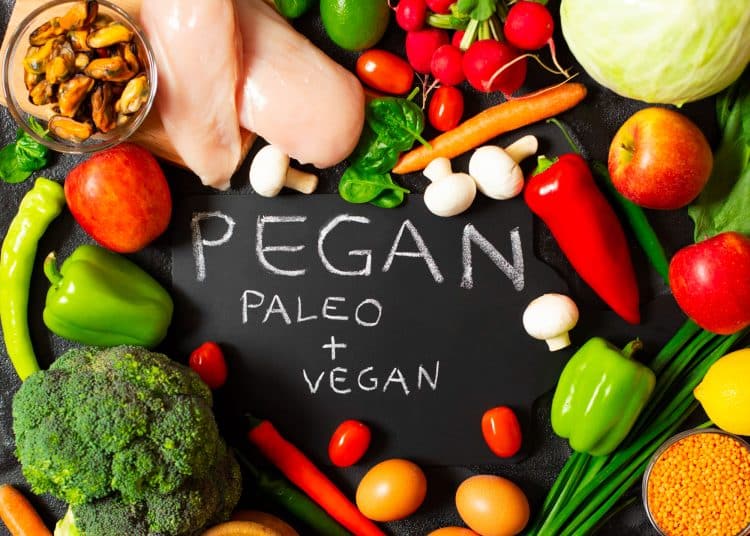
According to Dr. Hyman, the pegan diet can help balance blood sugar levels, reduce inflammation, and promote overall health. Furthermore, the pegan diet is less restrictive than the paleo and vegan diets.
The pegan diet largely relies on vegetables and fruit to meet your daily caloric needs. Nonetheless, you can also eat lean, sustainably raised meats on this diet. You can also eat legumes to meet your daily nutrition needs.
On a pegan diet, 75% of your plate should consist of vegetables and fruits; the remaining 25% can be meats (preferably grass-fed, organic, or sustainably raised).
The pegan diet is gaining popularity among people who agree with the benefits of veggies and fruits in promoting overall health but also don’t want to give up high-protein food sources, such as meat, fish, and milk.
Unlike several short-term diets aimed at weight loss, the pegan diet promotes holistic health and well-being, and you can follow it indefinitely. This diet does not preach anything you cannot follow for the long term.
Notably, the pegan diet excludes dairy, grains, and beans from the grocery list. Although many nutrition experts appreciate this diet’s focus on nutrient-rich veggies, unprocessed, whole foods, and sustainably sourced meats, the three exclusions make it a no-go for many people.
Summary
The pegan diet is a hybrid of the paleo and vegan diet that promotes eating real, whole, sustainably raised fresh food. This diet aims to help dieters lose weight and boost longevity by reducing inflammation, boosting detoxification, improving gut microbiome, and controlling blood sugar and insulin levels.
Foods To Eat on the Pegan Diet
In contrast to many restrictive diets, the pegan diet doesn’t dictate how much you can eat in a day, nor does it provide a meal timetable. You are in total control of your meal sizes and timing on this diet.
The pegan diet favors foods with a low glycemic load, meaning you must eat foods that don’t spike your blood sugar levels. The glycaemic index (GI) ranks carb-containing foods. Focus on foods that have a GI value of 55 or less.
Although the pegan diet does not restrict sugar intake, you must considerably scale back on your sugar consumption, as it has minimal nutritional value but adds to your calorie bottom line. High-sugar foods can also cause blood sugar spikes, which is not ideal on the pegan diet.
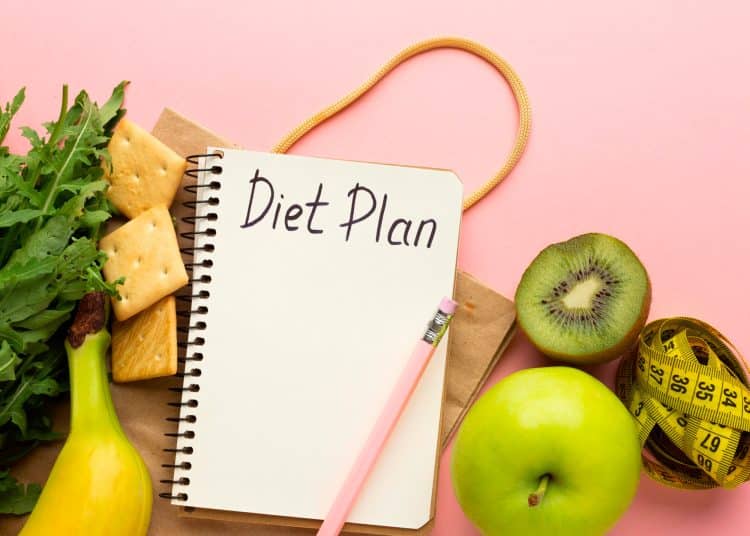
A Brief on How To Design Your Diet
Most beginners feel like a deer caught in headlights when designing their diet. If you are one such individual, don’t worry — we have you covered. Here is an oversimplified step-by-step process of creating your diet:
- Determine your daily calorie intake goal. Use this total daily energy expenditure (TDEE) calculator to get a suitable calorie target that fits your lifestyle.
- Break the calorie target into a reasonable macronutrient split. Tip: Use a high-protein diet to build muscle while losing fat.
- Divide the macro split into three to five daily meals that include nutrient-dense whole foods and fit the pegan diet principles.
If you are still having trouble figuring out where to start, I have a seven-day pegan diet plan for you later in this article.
Pegan Diet Foods
Here are the foods that should be a part of your pegan diet plan:
Vegetables and Fruits
Three-fourths of the calories in a pegan diet must come from veggies and fruits. Since this is the main food source, you should get comfortable cooking (and eating) vegetables. Some vegetables and fruits can have a significant amount of carbs. You must only choose foods with a low GI value. Dr. Hyman recommends berries and watermelons because of their low glycemic values.
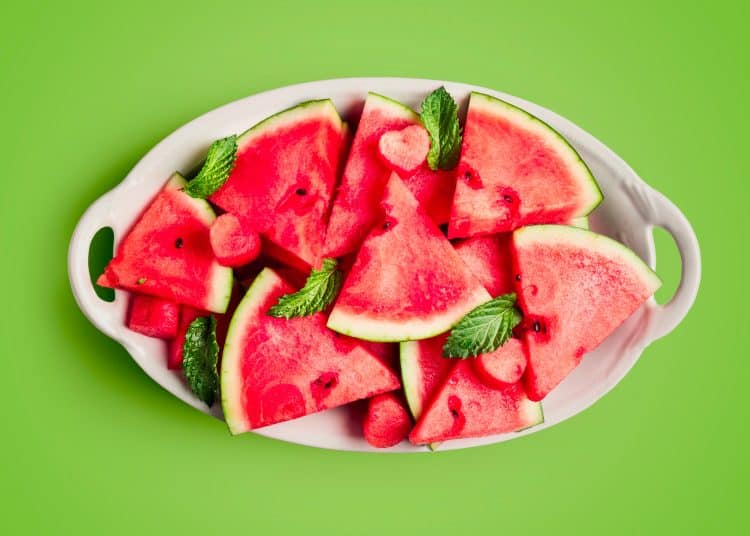
Minimally Processed Fats
The pegan diet encourages eating a decent amount of healthy fats daily for optimal body functioning. Nuts and seeds are packed with high-quality fats and are rich in protein and fiber. If you’re not a fan of snacking on nuts and seeds, you can substitute them with nut butter. However, ensure that the nut butter does not have added sugar. Opt for organic products when possible.
Cold-pressed olive and avocado oil are another healthy fat source, as are coconuts and unrefined coconut oils. Omega-3s can also boost your overall health. You must avoid peanuts and processed seed oils.
Sustainably Raised Meats
Unlike the vegan diet that requires you to shun animal food sources, the pegan diet involves getting 25% of your daily calories through meat. Dr. Hyman recommends beef, chicken, lamb, and also ostrich or bison on the pegan diet. However, you must only eat sustainably and responsibly raised meats.
Think of meats as a side dish on the pegan diet. Furthermore, you must limit your meat intake to 4 to 6 ounces per meal. Avoid conventionally farmed meats and only opt for grass-fed, pasture-raised meat sources.
Eggs
Eggs are allowed on the pegan diet. This protein-rich food source is a breakfast staple in many pegan diet plans. It also has a high vitamin B12 content, ensuring pegans don’t run a B-complex deficiency.

Fish
Along with meats, fish intake is also allowed on the pegan diet plan. Dr. Hyman recommends sardines and wild salmon as these have low mercury content. Mercury is toxic, and exposure to it can lead to serious health problems.
Generally, larger and longer-lived fish contain the most mercury, including shark, swordfish, fresh tuna, marlin, and king mackerel. [1]
A Few Whole Grains and Legumes
Grains and legumes can cause a sharp rise in blood sugar levels and hence are not allowed on the pegan diet — a characteristic it shares with the paleo diet. However, a few gluten-free grains, such as quinoa, buckwheat, and black rice, are allowed on the pegan diet plan and offer several health benefits. [2]
A maximum of one cup of beans (or, preferably, lentils) is permitted daily on the pegan plan. On the other hand, you must limit your grain intake to 1/2 cup (125 grams) per meal.
Here are a few grains and legumes allowed on the pegan diet:
- Grains: Black rice, quinoa, amaranth, millet, teff, oats
- Legumes: Lentils, chickpeas, black beans, pinto beans
Summary
The pegan diet is more flexible than the paleo and vegan diets and comprises 75% fruits and vegetables and 25% meats, significantly expanding your food choices. You must follow a personalized pegan diet based on your calorie goals for the best results.
Foods To Avoid on the Pegan Diet
Most diets designed to help you control your blood sugar levels and lose weight involve food cuts; the pegan diet is no different. Here is the list of restricted foods on the pegan diet:
Dairy Products
Dairy products are a big no on the pegan diet. However, you can switch to dairy alternatives, such as nut milk or coconut yogurt. Ensure that you only get the unsweetened versions. Get in the habit of reading food labels and only pick the foods that meet your daily caloric and macronutrient requirements.
Furthermore, Dr. Hyman recommends goat or sheep dairy for folks that cannot give up cow products, as these are easier to digest than other forms. However, you might need some time to adjust to goat and sheep milk and cheese. [3]
Gluten
The pegan diet restricts gluten intake to limit its potential damage to your stomach. You must limit gluten intake on the pegan diet even if you are not gluten intolerant or have Celiac disease. Although this diet allows gluten-free whole grains, you must use them sparingly. You must get most of your carbohydrates from fruits and vegetables.
Legumes
Most legumes can spike your blood sugar levels and are not allowed on the pegan diet. However, you can eat the four legumes mentioned above in limited quantities occasionally to add variety to your meals.
Refined Oils and Additives
You must exclude refined or processed oils from your cooking, as these can lower good HDL cholesterol and raise insulin levels, triglycerides, and harmful LDL cholesterol. Keep your cupboard clear of canola, soybean, sunflower, and corn oil.
Furthermore, preservatives, artificial flavors, colors, and other additives are banned on the pegan diet, as these can spike blood sugar levels. Remember, the pegan meal plan is part paleo, meaning you must keep your meals as basic as possible.
Sugar
Although the pegan diet doesn’t ban sugar intake, you must restrict it as it can spike your blood sugar levels without adding to your macro or micronutrient bottom line. You can use its alternatives, such as stevia, to flavor your foods or beverages.
Summary
Sugar or sugary foods and beverages, flavorings, colors, refined oils, dairy products, gluten, and legumes are banned on the pegan diet. As a rule of thumb, if you are not sure if something is allowed on the pegan diet, chances are, it isn’t.
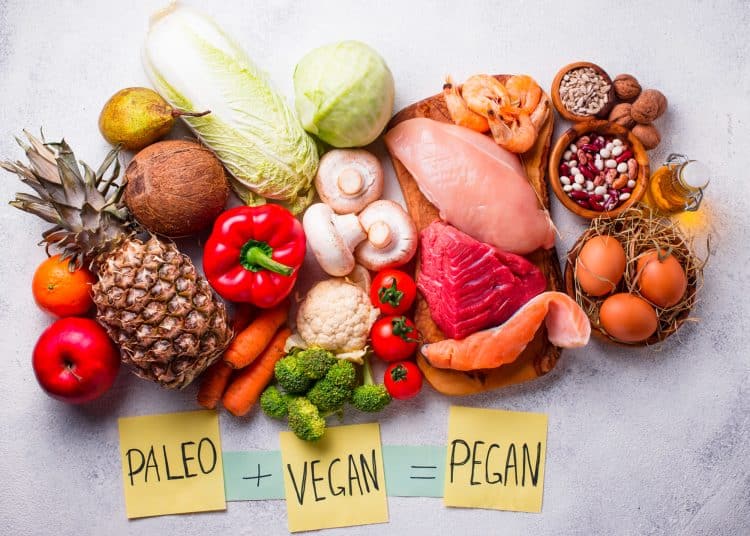
Now that you know about the food sources that you should include in a pegan diet plan, here is a list of food items to add to your cart in your next grocery shopping trip:
Vegetables:
- Spinach
- Mixed greens
- Broccoli
- Cauliflower
- Brussels sprouts
- Mushrooms
- Bell peppers
- Asparagus
- Avocado
- Cherry tomatoes
- Cucumbers
Proteins:
- Chicken breast
- Salmon fillets
- Shrimp
- Tofu
- Lentils
Fruits:
- Mixed berries (such as blueberries, strawberries, and raspberries)
- Oranges
- Apples
- Pears
- Bananas
Grains and Legumes:
- Quinoa
- Brown rice
- Chia seeds
Healthy Fats:
- Almond butter
- Olive oil
- Coconut oil
Nuts and Seeds:
- Almonds
- Cashews
Other:
- Almond milk (unsweetened)
- Coconut aminos (a soy sauce alternative)
- Balsamic vinegar
- Herbs and spices (such as garlic, ginger, turmeric, basil, oregano, etc.)
Summary
The pegan diet mainly excludes foods that can spike your blood sugar levels or cause inflammation in your body. This diverse sample grocery shopping list will ensure you’re not bored with your diet plan.
Benefits of the Pegan Diet
Switching to the pegan diet entails the following benefits:
Can Lead To Weight Loss and Improve Heart Health
The pegan diet includes nutrition-dense whole foods and cuts out sugar-laden and processed foods, which can help you lose weight. A pegan diet will also keep you feeling full for longer, reducing your risk of binging on junk food.
Furthermore, pegan diet-approved foods are packed with vitamins, minerals, antioxidants, fiber, and unsaturated fats, which can improve your heart health.

Won’t Cause Blood Sugar Spikes
This diet revolves around eating low-GI foods, which helps avoid blood sugar spikes and can be incredibly useful for people with diabetes, pre-diabetes, and other insulin-related conditions. Low-GI foods can also help you lose weight and keep it off. [4]
Limits Inflammation
The pegan diet restricts gluten and legume intake and limits your meat consumption to 25% of your total daily calories, which can help lower your muscle, tendon, and ligament inflammation. Lower inflammation can help athletes recover faster between their workouts.
Improves Gut Health
Some non-starchy vegetables, like asparagus, are rich in prebiotics, which can improve your gut health. A healthy gut microbiome can help prevent chronic health conditions, such as obesity, hypertension, and diabetes.
Less Restrictive
The pegan diet is less restrictive than most other popular diets, including paleo and vegan. It allows you to include a variety of food sources in your diet, which keep your meals exciting and ensure you meet your daily macro and micronutrient needs.
Make Better Food Choices
Since the pegan diet restricts gluten, legumes, oils, preservatives, and flavorings, you must read nutrition labels before adding something to your cart. Being mindful of your dietary choices can improve your overall health and well-being.
Summary
A pegan diet plan can improve your heart and gut health, lower inflammation, and limit blood sugar level spikes. This diet is more accommodating than the vegan and paleo diets but is just as effective at weight loss. It will also make you more mindful of your food choices.
Drawbacks of the Pegan Diet
Here are the disadvantages of following the pegan diet:
Lack of Scientific Evidence
The pegan diet revolves around the idea that dairy, gluten, and legumes can cause inflammation and blood sugar spikes, and limiting these foods can fix these issues. However, there is conflicting evidence about these outcomes, which undermines some of the benefits of the pegan diet. [5]
Can Lead To Nutritional Deficiencies
Limiting dairy, gluten, and legume intake can lead to nutritional deficiencies if you don’t follow a balanced diet. Furthermore, sticking to this diet for an extended period can trigger eating disorders if taken to extremes or followed by people with existing health conditions.
Makes Eating Out Challenging
The pegan diet requires you to control your portion sizes (75% vegies and 25% meat) and avoid dairy, gluten, and legumes. However, sticking to these parameters can be challenging while eating out with friends or family.
Expensive & Lack of Accessibility
The pegan diet promotes eating organic foods and sustainably and ethically raised meats. These products are often more expensive than regular products and might not fit everyone’s budget. Further, everyone might not have access to organic vegetables, fruits, and grass-fed meats.
Remember, you must always follow a diet plan that you can stick to for the long term. Following a strict diet regimen for a short time might help you lose weight, but the weight will come back as soon as you return to your old ways.
Improving longevity, health, and overall wellness requires lifestyle changes. Playing the short-term game will only get you so far.
Summary
Like every other diet, the pegan diet has its fair share of cons. Following this diet for an extended period can lead to nutritional deficiencies in some cases. Plus, buying organic foods can burn a hole in your pocket and make dining out challenging.
Risks of the Pegan Diet
Since this diet program restricts dairy, legumes, and grains, many people are concerned that it can lead to nutrient deficiencies. For example, not drinking milk can lead to calcium, protein, potassium, and vitamin D deficiencies. On the other hand, shunning whole grains can cause fiber and essential vitamins, and mineral deficiencies.
That said, the pegan diet has no known or scientifically-proven health risks. Following a balanced diet program will ensure you don’t run into any nutrient deficiencies and hit all your health markers. You must also personalize your pegan diet plan to achieve your health goals.
Use meal-tracking apps, such as MyFitnessPal, to ensure you meet your macro and micronutrient needs. You could also use supplements to fill nutrition voids. Consult your healthcare provider before starting a diet program, especially if you are dealing with medical issues.
Summary
The biggest risk associated with the pegan diet is that it can lead to nutritional deficiencies. Consult a registered dietician or your healthcare provider before starting any new diet program to ensure safety. Use calorie-tracking apps to ensure you are hitting your macro and micronutrient goals.
7-Day Pegan Diet Meal Plan
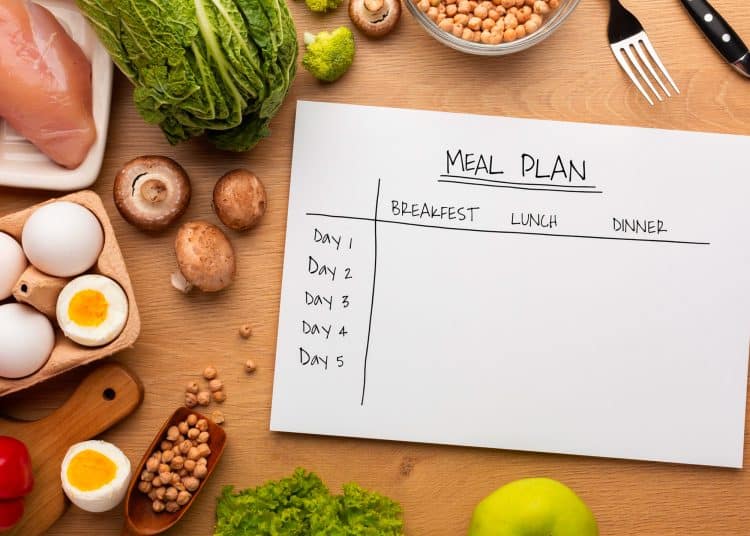
Given below is a sample seven-day pegan diet plan. Feel free to change the foods in this diet to meet your dietary preferences.
Day 1
Meal 1: Breakfast
- Scrambled tofu with vegetables
- 1 cup of mixed berries
Total: Calories: 370; carbs: 32g; protein: 21g; fats: 21g
Meal 2: Lunch
- Mixed greens salad with grilled chicken breast, avocado, and olive oil dressing
- 1 small apple
Total: Calories: 480; carbs: 32g; protein: 30g; fats: 25g
Meal 3: Dinner
- Baked salmon with roasted vegetables
- 1/2 cup quinoa
Total: Calories: 560; carbs: 35g; protein: 39g; fats: 27g
Day 2
Meal 1: Breakfast
- Omelet with veggies
- 1 apple
Total: Calories: 360; carbs: 25g; protein: 21g; fats: 20g
Meal 2: Lunch
- Lentil soup with mixed vegetables
- 1 small pear
Total: calories: 410; carbs: 75g; protein: 21g; fats: 2g
Meal 3: Dinner
- Grilled chicken breast with steamed broccoli and cauliflower rice
- 1/2 medium-sized sweet potato
Total: Calories: 490; carbs: 31g; protein: 42g; fats: 15g
Day 3
Meal 1: Breakfast
- Almond milk pudding
- Berries
- 1 small banana
Total: Calories: 340; carbs: 43g; protein: 9g; fats: 15g
Meal 2: Lunch
- 1 serving of shrimps and mixed greens salad
- 1 small orange
Total: Calories: 430; carbs: 32g; protein: 30g; fats: 20g
Meal 3: Dinner
- Stir-fried tofu with mixed vegetables in coconut aminos sauce
- 1/2 cup brown rice
Total: Calories: 460; carbs: 49g; protein: 17g; fats: 21g
Day 4
Meal 1: Breakfast
- Almond butter and banana smoothie made with almond milk and spinach
- 1 small orange
Total: Calories: 360; carbs: 45g; protein: 11g; fats: 15g
Meal 2: Lunch
- Grilled chicken salad with mixed greens, cucumbers, cherry tomatoes, and olive oil dressing
- 1 small pear
Total: Calories: 460; carbs: 25g; protein: 31g; fats: 25g
Meal 3: Dinner
- Baked cod with roasted asparagus and quinoa
- 1/2 medium-sized sweet potato
Total: Calories: 490; carbs: 51g; protein: 37g; fats: 15g
Day 5
Meal 1: Breakfast
- Quinoa porridge with almond milk, topped with mixed berries and chopped almonds
- 1 small banana
Total: Calories: 390; carbs: 63g; protein: 11g; fats: 8g
Meal 2: Lunch
- Vegetable stir-fry with tofu, broccoli, bell peppers, and cashews
- 1 small apple
Total: Calories: 430; carbs: 42g; protein: 20g; fats: 15g
Meal 3: Dinner
- Grilled salmon with steamed Brussels sprouts and cauliflower mash
- 1/2 cup quinoa
Total: Calories: 560; carbs: 35g; protein: 39g; fats: 27g
Day 6
Meal 1: Breakfast
- Spinach and mushroom omelet cooked in coconut oil
- 1 cup of mixed berries
Total: Calories: 370; carbs: 27g; protein: 21g; fats: 21g
Meal 2: Lunch
- Lentil soup with mixed vegetables
- 1 small orange
Total: Calories: 410; carbs: 75g; protein: 21g; fats: 2g
Meal 3: Dinner
- Grilled chicken breast with roasted vegetables
- 1/2 cup brown rice
Total: Calories: 510; carbs: 34g; protein: 42g; fats: 16g
Day 7
Meal 1: Breakfast
- Chia seed pudding made with almond milk and topped with mixed berries
- 1 small pear
Total: Calories: 310; carbs: 35g; protein: 9g; fats: 15g
Meal 2: Lunch
- Mixed greens salad with grilled shrimp, avocado, and olive oil dressing
- 1 small apple
Total: Calories: 430; carbs: 32g; protein: 30g; fats: 20g
Meal 3: Dinner
- Baked tofu with roasted Brussels sprouts and cauliflower rice
- 1/2 medium-sized sweet potato
Total: Calories: 440; carbs: 46g; protein: 17g; fats: 20g
Summary
The pegan diet relies mainly on vegetables to meet your daily caloric needs. Meats and fish are treated as sides in pegan meals and constitute much smaller portion sizes. Selected grains and legumes are allowed occasionally on a pegan diet.
FAQs
Can the pegan diet plan help me lose weight?
Weight loss ultimately boils down to calories in versus calories out. You must be in a calorie deficit to lose weight, meaning you need to burn more calories in a day than you consume. According to the CDC, sustaining a 500-calorie deficit for a week can help you shed one-pound weekly. [6]
Considering this, any diet, including pegan, can help you lose weight if you can maintain a calorie deficit for the required duration.
What are the prerequisites for starting a pegan diet?
The pegan diet is pretty straightforward and can be followed by healthy individuals without any specific requirements. You must, however, consult a registered nutritionist to ensure you meet your daily macro and micronutrient needs while following the pegan diet. Furthermore, people dealing with health issues should get a medical clearance before starting a new training or diet program.
How many meals a day can I eat on a pegan diet?
The pegan diet doesn’t concern itself with your calorie intake, meal frequency, or timing. It gives you a list of food sources you can and cannot eat. It is up to you to determine your daily caloric goal and break it down into a suitable macro split and meal frequency.
Ensure that your meal frequency fits your lifestyle. Folks that have never eaten more than three meals shouldn’t suddenly switch to a six-meal-a-day diet plan. Stick to a meal plan that you can follow for the long term.
How long should a pegan diet last?
Dr. Hyman designed the pegan diet to be followed for the long term. Ensure that you are meeting your daily macro and micronutrient needs, and you can follow this diet program indefinitely.
Can I meet my daily protein requirements for building muscle on the pegan diet plan?
Since the pegan diet limits your meat intake to 25% of your total daily calories and restricts dairy, many people show concerns about meeting their daily protein requirements for building muscle.
Although your meat intake is limited to one-fourth of your daily calorie intake, you can still easily get one gram of protein per pound of body weight on this diet, which is sufficient for building and maintaining muscle mass by eating lentils, chickpeas, black beans, pinto beans, nuts and seeds, and goat and sheep dairy.
Note: The content on Fitness Volt is for informative purposes only. Do not take it as medical advice to diagnose, prevent, or treat health problems. If you’re suffering from a health issue, are pregnant, or are under 18 years old, you should consult your physician before starting any new supplement, nutrition, or fitness routine.
Wrapping Up
Starting a new diet plan can be intimidating. Furthermore, most diet plans are restrictive, which makes following them a hassle and a constant struggle. The pegan diet plan takes the best of the paleo and vegan diets and adds more unique characteristics to the mix to help you achieve better overall health.
This article covers the benefits and drawbacks of the pegan diet and gives you an exhaustive list of foods you can and cannot eat, making it easy to determine if this diet is right for you. I’ve also included a seven-day pegan diet plan to help you get started. Best of luck!
References
- Storelli MM, Marcotrigiano GO. Fish for human consumption: risk of contamination by mercury. Food Addit Contam. 2000 Dec;17(12):1007-11. doi: 10.1080/02652030050207792. PMID: 11271834.
- Della Pepa G, Vetrani C, Vitale M, Riccardi G. Wholegrain Intake and Risk of Type 2 Diabetes: Evidence from Epidemiological and Intervention Studies. Nutrients. 2018; 10(9):1288. https://doi.org/10.3390/nu10091288
- Shrestha A, Samuelsson LM, Sharma P, Day L, Cameron-Smith D, Milan AM. Comparing Response of Sheep and Cow Milk on Acute Digestive Comfort and Lactose Malabsorption: A Randomized Controlled Trial in Female Dairy Avoiders. Front Nutr. 2021 Feb 15;8:603816. doi: 10.3389/fnut.2021.603816. PMID: 33659266; PMCID: PMC7917135.
- Rizkalla SW, Bellisle F, Slama G. Health benefits of low glycaemic index foods, such as pulses, in diabetic patients and healthy individuals. Br J Nutr. 2002 Dec;88 Suppl 3:S255-62. doi: 10.1079/BJN2002715. PMID: 12498625.
- Jones JM, Engleson J. Whole grains: benefits and challenges. Annu Rev Food Sci Technol. 2010;1:19-40. doi:10.1146/annurev.food.112408.132746
- Centers for Disease Control and Prevention. (2021). Losing Weight. Retrieved from https://www.cdc.gov/healthyweight/losing_weight/index.html
